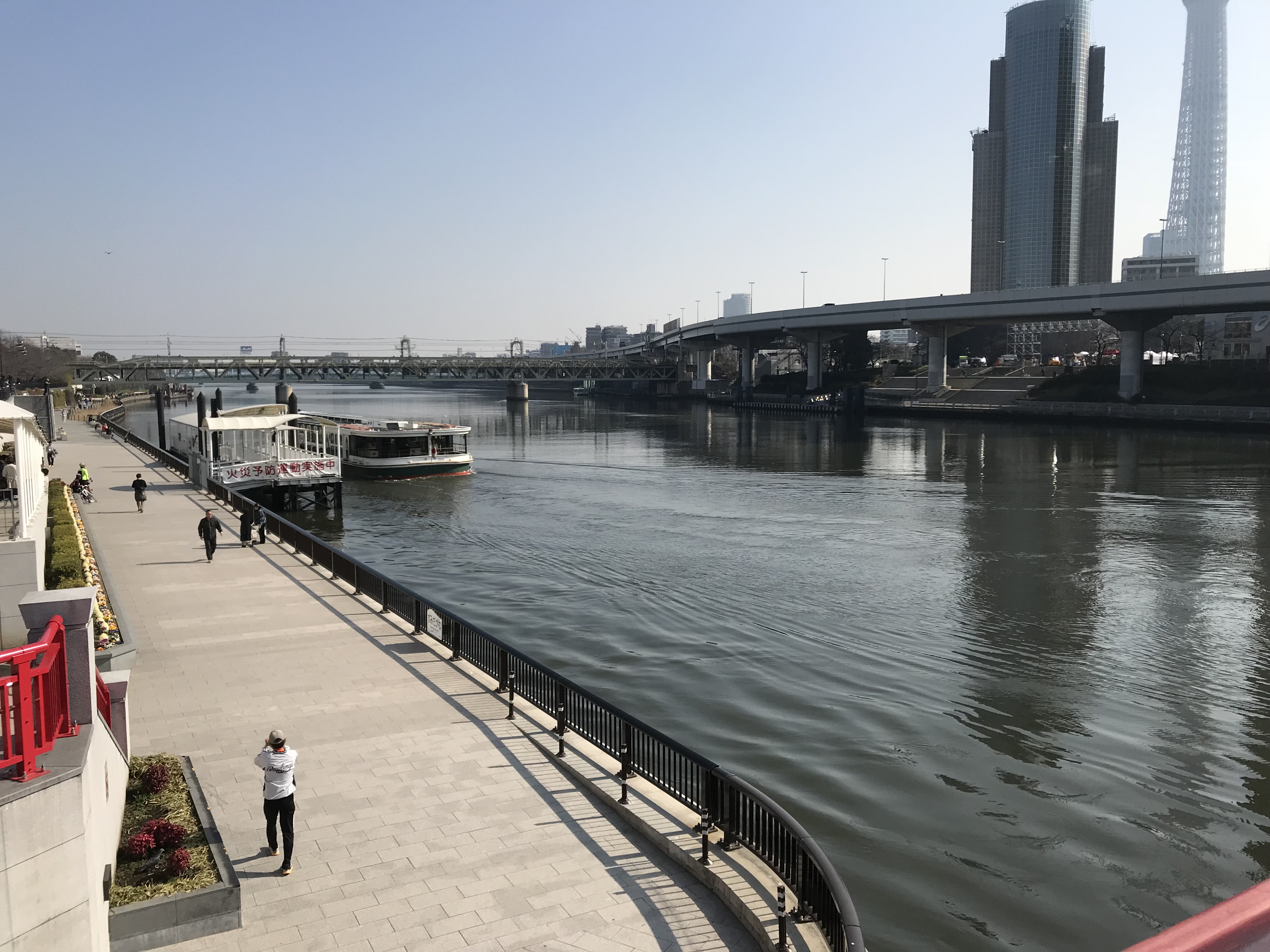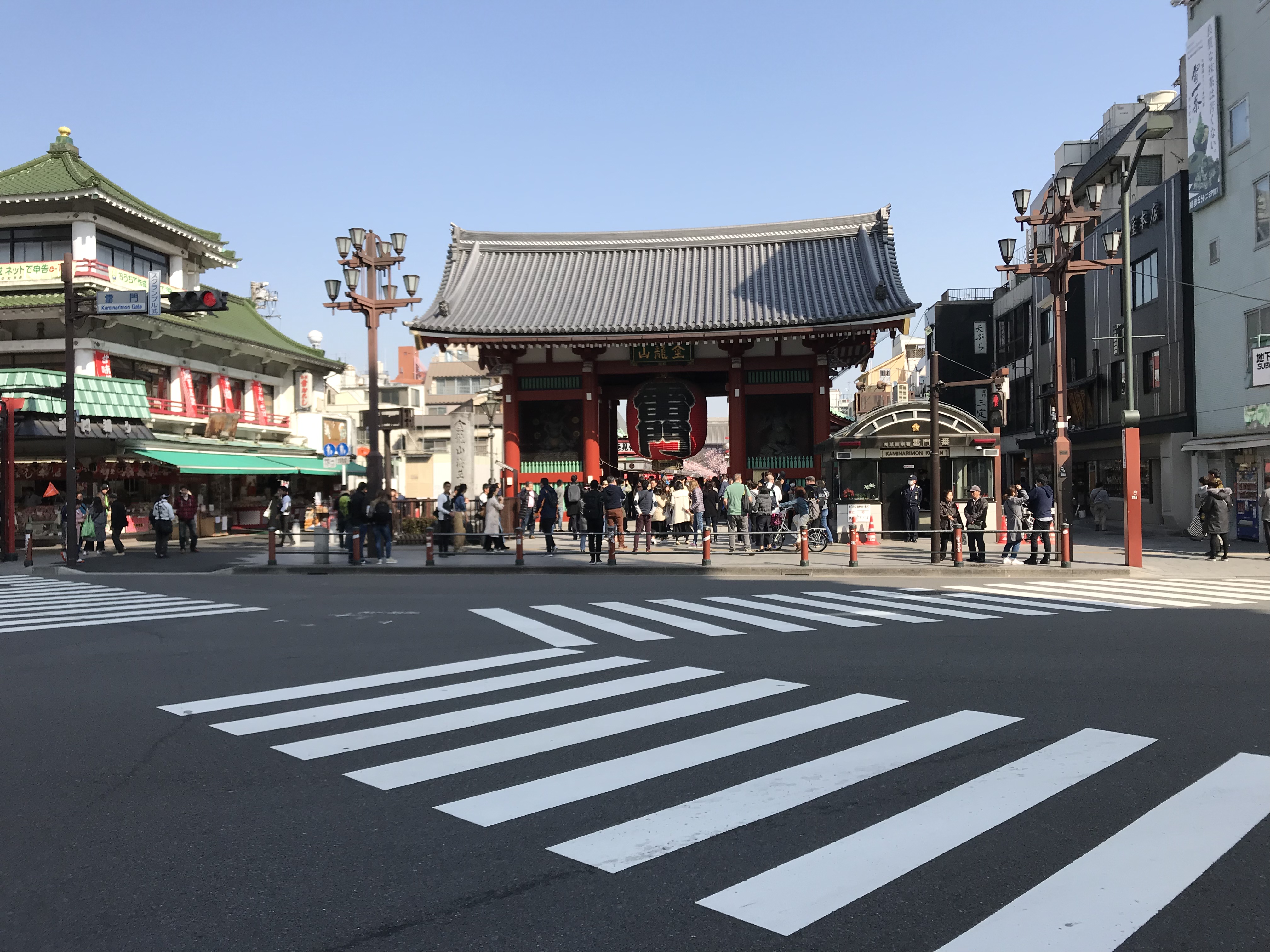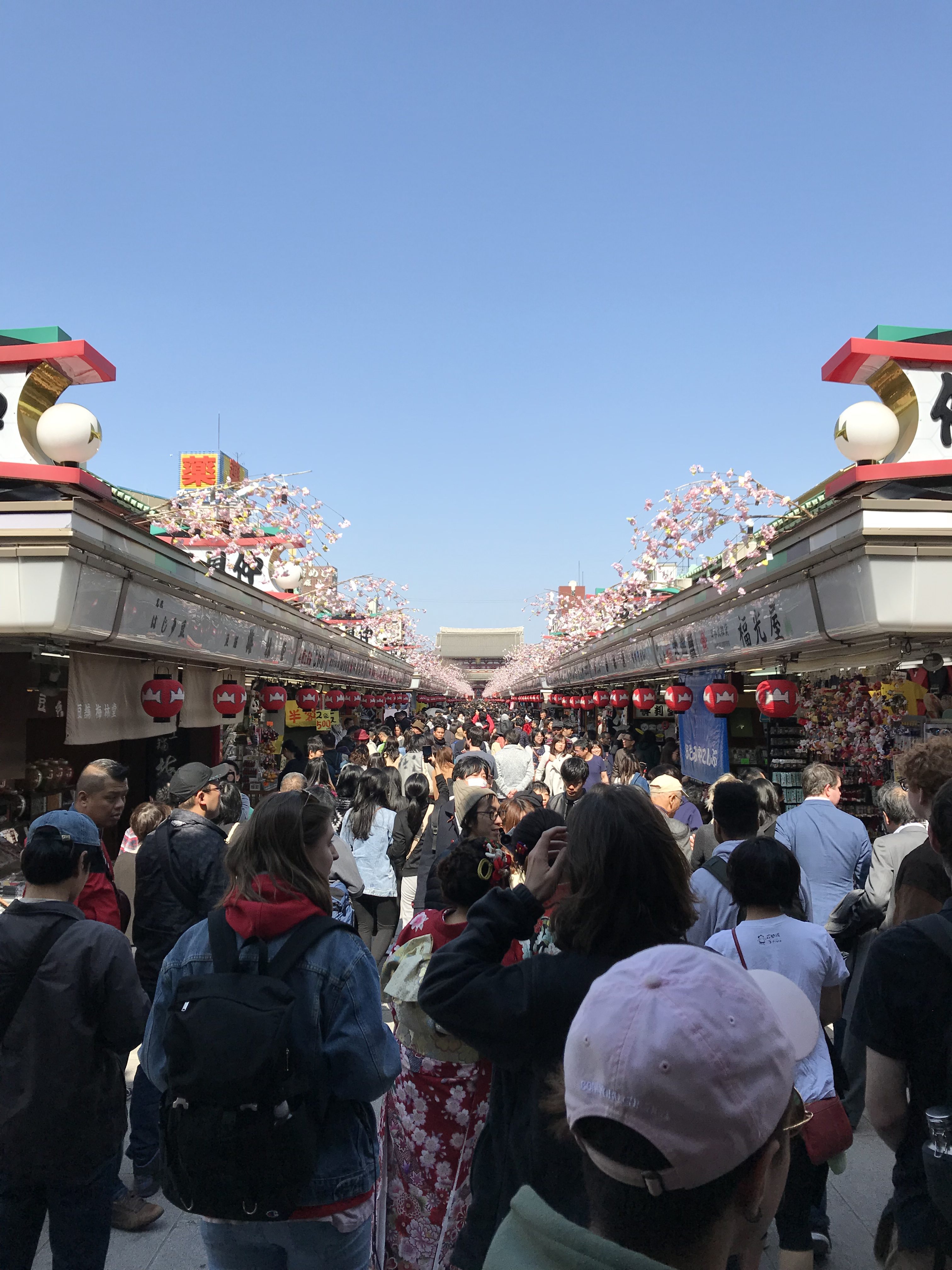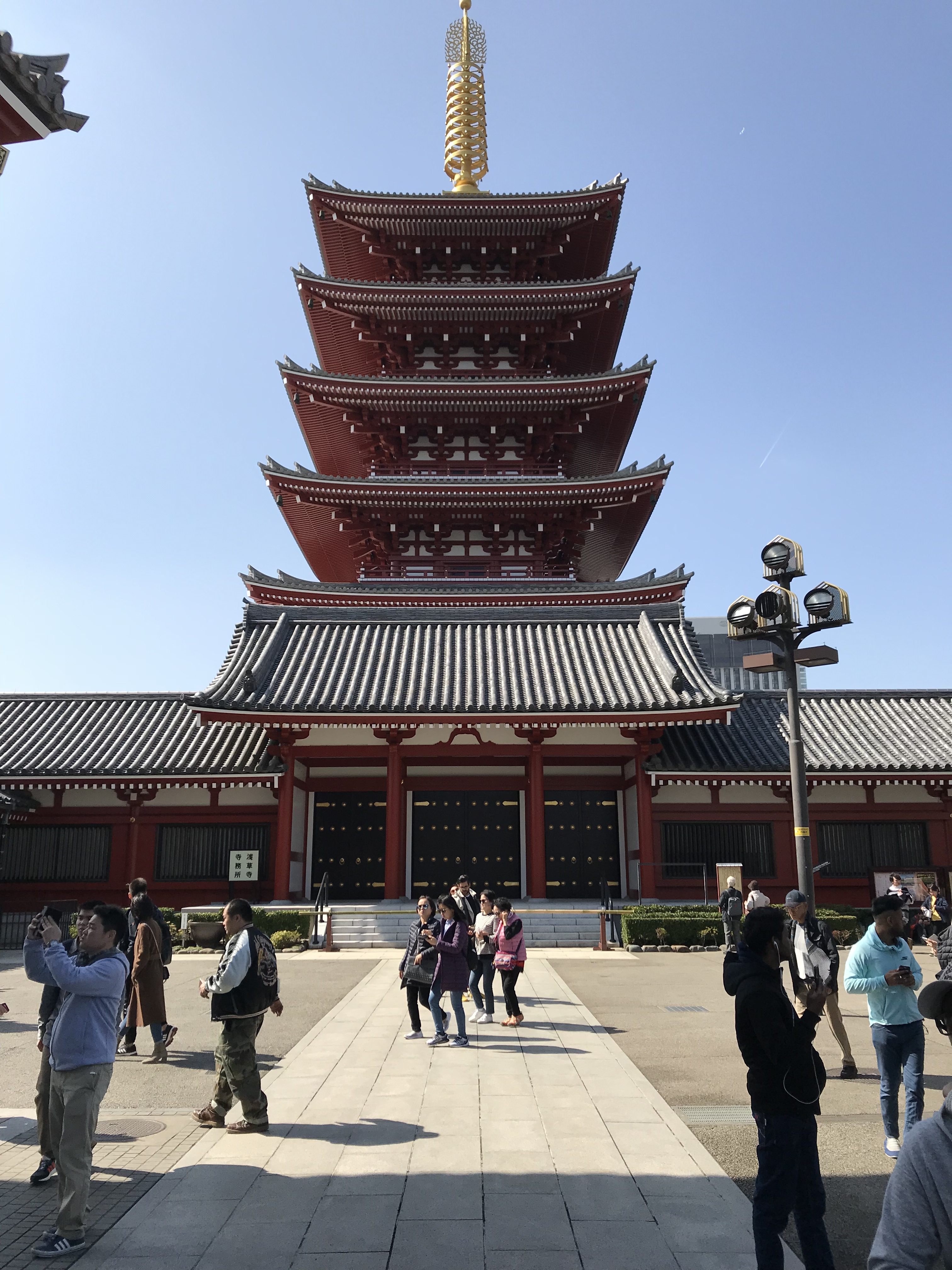Nihon-Buyo and My Trip to Asakusa

This piece was originally written, and submitted, as a reflection assignment for my Practical Japanese class. No alterations were made this time.
On Sunday, March 4, 2018, my Japanese class and I visited Asakusa to experience Nihon Buyo, Senso-Ji, and eat Okonomiyaki.
The two most interesting things I experienced this trip were dancing and dressing for Nihon Buyo, as well as Asakusa itself. I left my dorm in Takadanobaba at about 8:30 in the morning and took the Tozai line to the Ginza line to Asakusa station. I was in awe at how nice the stations on the Ginza line were, with “G16” featuring granite pillars. It was as if Beverly Hills was a subway line. Once I arrived at Asakusa Station, I attempted to head towards the cultural center only to head towards the Asahi “Golden Turd” building across the river in Sumida. Once I realized I was going the wrong way, I waited at the cultural center for fellow students to arrive. A couple of us went up to the eighth floor and ordered ice cream while taking pictures of Senso-Ji. Once we were finished eating our ice cream, we headed back down to meet with the rest of the group. Next, we headed to the sixth floor, took off our shoes, switched into special socks, emptied our pockets, and dressed in yakata in preparation for Nihon Buyo. Nihon Buyo is a traditional form of Japanese dance which emphasizes grace and elegance. According to the Asakusa cultural tourist center, it dates back over 400 years. We practiced a routine for “Sakura Sakura,” a famous Japanese song about the blossoming sakura trees. It’s one thing to witness Nihon Buyo but it’s another thing to experience it. Through practicing grace and elegance, I physically experienced Japanese culture; something I haven’t done since bathing in an Onsen back in February. Once we undressed from our yakata, we explored Senso-Ji temple, starting with the famous Kaminarimon, or “Thunder Gate,” representing one of the main gates of Senso-Ji. The giant 680kg chōchin, or “lantern” is actually a replica of the original lantern. It was installed at Kaminarimon in 2003 as a result of a donation by the founder of what is now Panasonic. We walked along Nakamise-Dōri, one of Tokyo’s best shopping streets, as we headed towards Senso-Ji itself and its five-story pagoda. Senso-Ji is Tokyo’s oldest temple, having been built in the year 628. After taking too few pictures of the temple and its pagoda, we cleansed our hands as part of a purification ritual, thus allowing us to enter the temple if we wanted to. After our purification, we got okonomiyaki at a local restaurant near the temple. While most of us conversed in Japanese, asking about the senpai-kohai relationship, I kept fairly quiet as I observed our okonomiyaki being made. After about an hour of eating Okonomiyaki and Monjayaki, we took one last group picture and headed our separate ways.
This was my first time visiting Asakusa. Back in January, I briefly visited Tokyo Skytree located in neighboring Sumida, just one stop away on the Toei Asakusa Line. While I walked around the streets of Sumida for a couple minutes that day, I wasn’t prepared for what Asakusa had to bring. Asakusa was not like any part of Tokyo I had previously visited; with its shades of red, green, and traditional flare that the rest of the city lacks. I felt like I was in a different city, while some of my friends felt like they were in China. The overall vibe here was different too; some parts such as the temple were dense and touristy while other parts had a quintessential Tokyo vibe. My time in Asakusa was too short; I need to go back before I leave in April.
Here are some photos from Asakusa and Senso-Ji







One Reply to “Nihon-Buyo and My Trip to Asakusa”